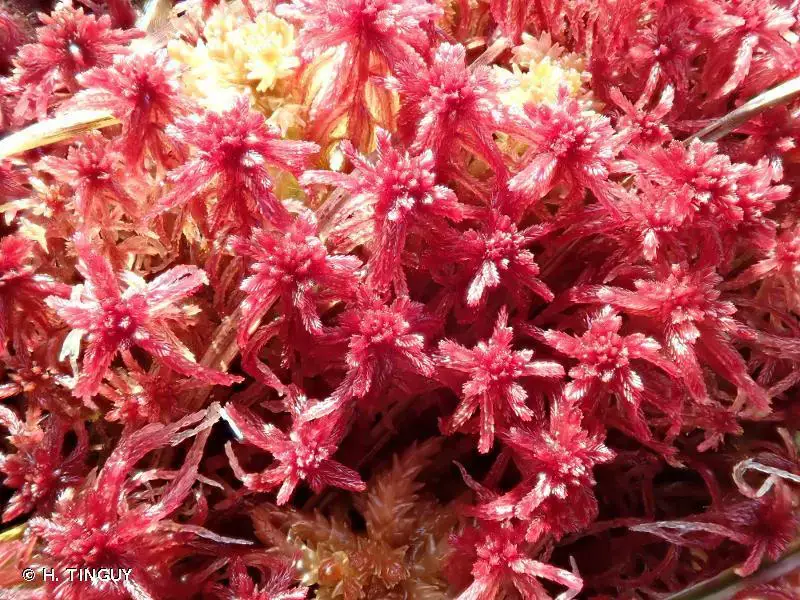
5f6b53_ca929406380a42fd82c845f11deb41b0~mv2.jpg from: https://www.wodnepodroze.com/single-post/Torfowiec-czerwonawy-Sphagnum-rubellum
Introduction
Welcome, fellow moss enthusiasts! Today, we’re going to delve into the fascinating world of Sphagnum rubellum Wilson, a captivating member of the Sphagnaceae family, also known as the Sphagnum moss. Prepare to be enchanted by this unassuming yet remarkable plant that plays a vital role in our ecosystems.
Background
Before we dive into the specifics of Sphagnum rubellum Wilson, let’s set the stage with a brief introduction to the Bryophyta division, which encompasses mosses, liverworts, and hornworts. These ancient plants have been around for millions of years, predating even the dinosaurs! They are considered the simplest of land plants, lacking true roots, stems, and leaves, yet they possess an incredible ability to thrive in diverse environments.
Main Content
Morphology and Identification
Sphagnum rubellum Wilson is a striking moss that forms dense, cushion-like mats or hummocks. Its vibrant

302412.jpg from: https://inpn.mnhn.fr/espece/cd_nom/6784
reddish-brown color is a distinctive feature, earning it the nickname “ruby moss.” This hue is due to the presence of pigments that protect the moss from harmful UV radiation. The individual plants are relatively small, typically ranging from 2 to 10 centimeters in height.
One of the most fascinating aspects of Sphagnum mosses is their unique ability to absorb and retain vast amounts of water, up to 20 times their dry weight! This remarkable trait is made possible by their specialized hyaline cells and capillary spaces, which act like tiny sponges, allowing the moss to thrive in wetland environments.

Sphagnum-capillifolium-rubellum-1020.jpg from: https://www.britishbryologicalsociety.org.uk/learning/species-finder/sphagnum-rubellum/
Global Distribution and Habitat
Sphagnum rubellum Wilson is widely distributed across the Northern Hemisphere, including North America, Europe, and Asia. It thrives in acidic, nutrient-poor environments such as bogs, fens, and peatlands. These habitats are often characterized by waterlogged conditions, making Sphagnum mosses the perfect inhabitants.
Ecological Roles and Adaptations
Sphagnum mosses play a crucial role in the formation and maintenance of peatlands, which are essential carbon sinks, helping to mitigate the effects of climate change. As these mosses grow and decompose, they create a thick layer of

8768531_orig.jpg from: https://www.centralcoastbiodiversity.org/sphagnum-rubellum.html
peat, which acts as a natural water filter and provides a unique habitat for a diverse array of plant and animal species.
One of the remarkable adaptations of

Sphagnum_rubellum.jpg from: https://de-academic.com/dic.nsf/dewiki/2565137
Sphagnum rubellum Wilson

77321371.jpg from: https://observation.org/photos/77321371/

RUBE-008-v-scaled.jpg from: https://vosserareplants.com/product/rube-008-sphagnum-rubellum/?lang=en
is its ability to acidify its surroundings through the release of organic acids. This process creates an inhospitable environment for many other plants, allowing Sphagnum mosses to dominate and thrive in these acidic conditions.
Case Studies/Examples
In the Siberian Arctic, Sphagnum rubellum Wilson has been found to play a vital role in the recovery of disturbed tundra ecosystems. Its ability to colonize and stabilize the soil, combined with its water-holding capacity, makes it an invaluable ally in restoring these fragile environments.
Technical Table
| Characteristic | Description |
|---|---|
| Division | Bryophyta |
Class
 DSC_0388.jpg from: https://phito.be/shop/sphagnum-rubellum/ |
Sphagnopsida |
| Family | Sphagnaceae
 Sphagnum_rubellum_palustre.jpg from: https://www.britishbryologicalsociety.org.uk/bryophyte-of-the-month/sphagnum-rubellum/ |
| Species | Sphagnum rubellum Wilson |
Color
 24588146.jpg from: https://waarneming.nl/observation/184348463/ |
Reddish-brown |
| Height | 2-10 cm |
| Water Absorption | Up to 20 times dry weight |
Conclusion
Sphagnum rubellum Wilson is a true marvel of nature, showcasing the incredible adaptations and ecological significance of mosses. From its vibrant hues to its water-holding capabilities, this unassuming plant plays a vital role in shaping and sustaining delicate ecosystems worldwide. As we continue to explore and appreciate the wonders of the natural world, let us ponder this thought-provoking question: How can we better protect and preserve these invaluable ecosystems for generations to come?